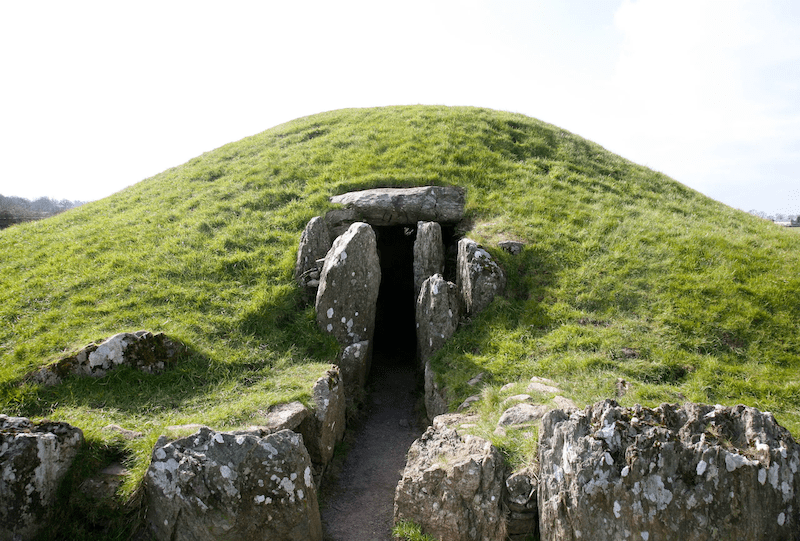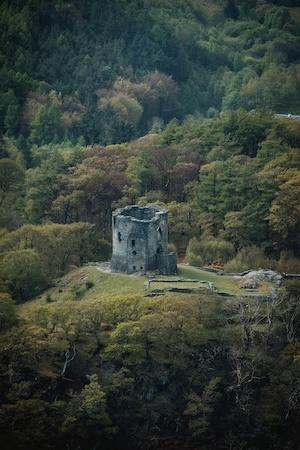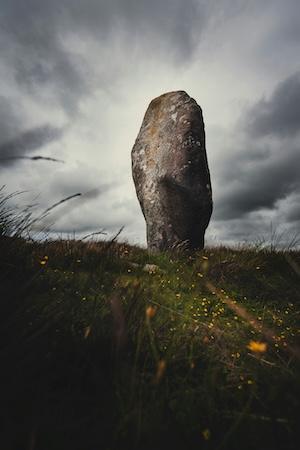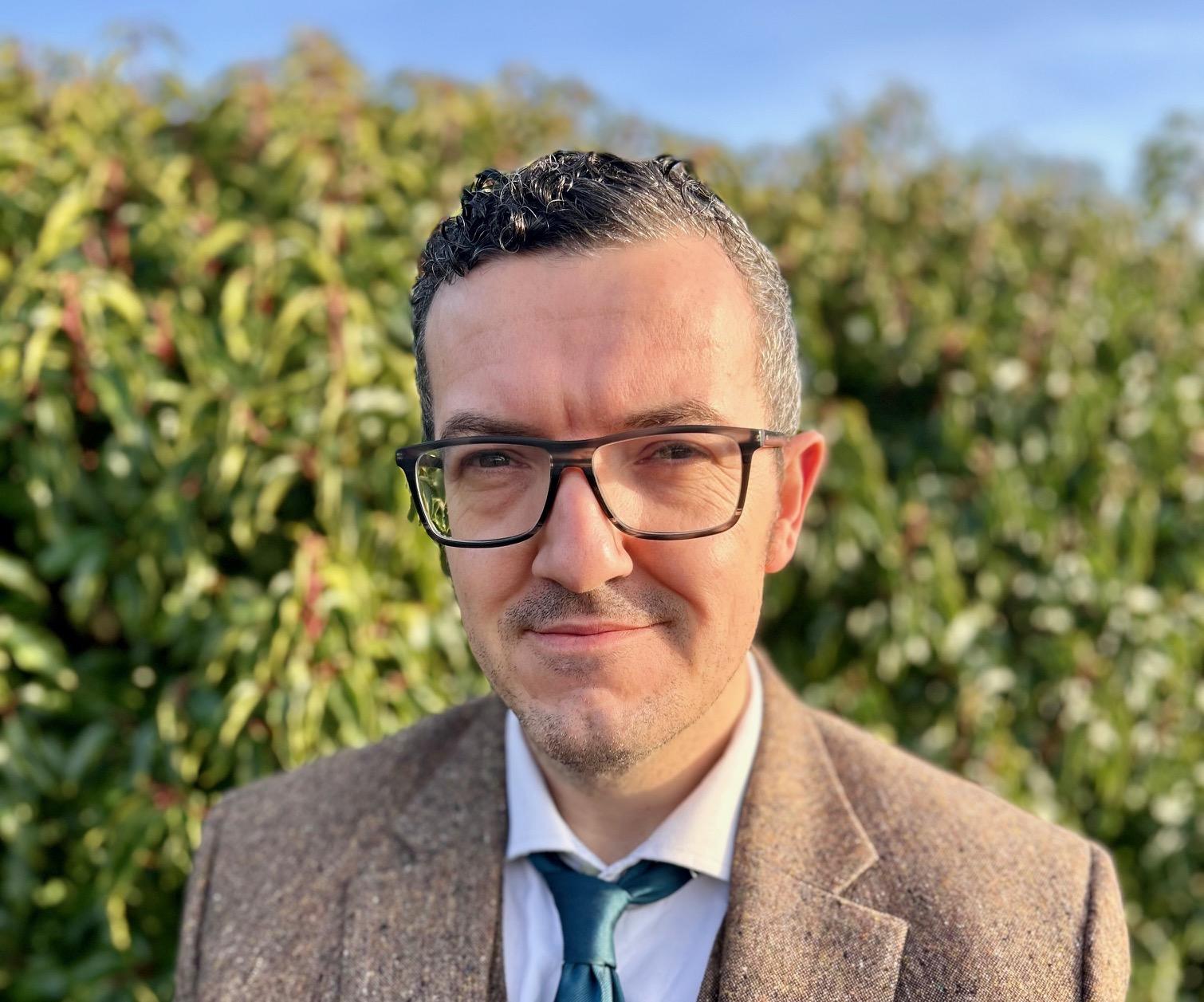Ahead of the release of his second novel, Don’t Let ‘Em Take the Children, next weekend, Welsh author RH Williams reflects on why his home country makes such a great setting for folk horror.

Days before Christmas, we stand in the harrowing cold of the Welsh countryside at Bryn Celli Ddu on Anglesey – a prehistoric burial chamber and ancient site of some significance – watching the local druid group give offerings to the gods, recite verses and conduct incantations in the name of celebrating the winter solstice. It is a strange mixture of the old and the new as the apparent ancient theatrics are streamed live on social media to audiences around the world.
The resurgence of interest in such practices in recent years demonstrates a fascination with the strange and archaic of these lands. And nowhere is this fascination more clearly demonstrated than in the realm of folk horror – a subgenre that blends ancient beliefs with folklore, rural isolation, and contemporary anxieties. Yet, apart from a few select examples (The Feast [2021] being one I highly recommend], Wales – in my opinion – is highly under-represented in folk horror as a setting. For that reason, I make my case here for its suitability.
The Clash of Ancient and Modern
A word that features heavily in the British variety of folk horror is ancient: An ancient ritual conducted in the woods; an ancient belief system practiced by an isolated community; an ancient evil that haunts the moors.
Ancient is something we have in droves in Wales. Here, the land is carpeted in castles, ruins, burial sites, and stone circles. Perhaps critically, it is the clash of the ancient and the modern that is the source of conflict in folk horror; a relevant example being The Ritual (by Adam Neville, 2011) in which four lads from London with modern day concerns and stresses go on a hiking trip in Sweden and encounter an ancient, malevolent force in a remote forest. In Wales, history and modernity sit side-by-side in most places, as though the fourth dimension of time has failed and the past and present exist in the same physical and temporal space. This is a landscape ravaged by change. Old mines and quarries have been recycled into theme parks and empty Methodist chapels are auctioned off to become trendy holiday homes. Here, there is ample fodder for the new and the old to clash.Â
(Photo by Mitchell Orr on Unsplash)

Another consideration is the rural setting. In folk horror, the landscape prominently features in the story like an additional character. The storyline of the city dweller encountering timeless horrors in the isolated countryside is something we are most familiar with; consider the recent classic film Midsommar (2019), in which a grieving girl travels to a remote Scandinavian village for a midsummer festival, only to find herself tangled up in ancient violent rituals. While Wales is not the biggest of countries, isolation is easy to achieve – either in the mountains, the forests, the remote windswept beaches, or one of the countless little villages that litter the countryside. The potential story locations are numerous.
Add a Bit of Folklore or Myth
Beyond the settings, we have the curious tales and folklores that exist in the various localities. Folklore must surely be one of the biggest untapped resources of this small nation. Outside of Wales, how many of you are familiar with The Mabinogion – a collection of early Welsh tales that mix the history and myths of the Celts? Much like the old stories of the Brothers Grimm, although appropriated for modern children’s tales, the originals are dark, and cover themes we’d more likely encounter in Games of Thrones than in bedtime tales: incest, sexual violence, genocide, and betrayal. And much like Game of Thrones, you can’t expect your favourite characters to make it to the end.
The Mabinogion reflect many of the pre-Christian beliefs of the time. And pagan beliefs are a common feature of British folk horror; that prototype of the subgenre, The Wicker Man (1973), features a young Christian police officer who travels to a remote Scottish island on an investigation, only to get ‘caught up’ in the islanders’ pagan rituals.

Many pre-Christian traditions and rituals have resurged in Wales in recent years, and perhaps they never went away. The National Eisteddfod – an annual cultural festival and celebration of the Welsh language – features ceremonies reminiscent of druidic rituals, such as the use of a symbolic Horn of Plenty, flower dances, and trumpet fanfares. Wherever the Eisteddfod is held, a stone circle is erected, a practice that harks back to ancient times when stone circles were used for religious and ceremonial purposes. Another curious tradition that harks back to ancient Celtic traditions is the Mari Lwyd, a decorated horse’s skull that is fixed to the end of a pole and carried by a person shrouded in a sheet from door to door as they sing and engage in rhyming challenges during the Christmas season.
(A monolith in Pembrokeshire; photo by Daniel Morris on Unsplash)
What’s Lurking in the Hillside?
In Wales, pagan practices were seemingly better able to co-exist with the rise of Christianity than was observed in other parts of the Western world. Nowhere is this better demonstrated in folk horror than in the deep-seated anxieties about the power and mystery of the female form as exhibited in witchcraft. In Wales, the history makes for a fascinating read. Whereas witch-hunting hysteria was common across Western Europe between the 15th and 18th centuries (as vividly represented in the Witchfinder General [1968]), here, witchcraft was shaped by local customs and beliefs that were typically more accepted by the local population. Might this present us with opportunities for an alternative take on the witch myth story?
Altogether, the Welsh countryside is a perfect and vastly underutilised setting for folk horror. From the ancient clashing with the new, the desolate landscape, and the remnants of belief systems that pre-date Christianity, we have a vast array of ingredients for a terrifying and original folk horror recipe. And originality is something often lacking in modern horror – where tired tropes and overused concepts are repeatedly regurgitated for predictable set pieces. My advice for future authors and directors of folk horror: Come to Wales, you’ll find a welcome in the hillside, and probably some disturbing ideas as well.
Don’t Let ‘Em Take the Children is published on 28 September through The Book Guild.



One response to “The Welsh Countryside and Folk Horror: A Match Made in Heaven, or At Least Some Pre-Christian Pagan Equivalent?”
Thought-provoking! Definitely a rich playback in Wales for folk horror authors – I feel a book series creation could be on the horizon Huw! Looking forward to your book release on the 28th.